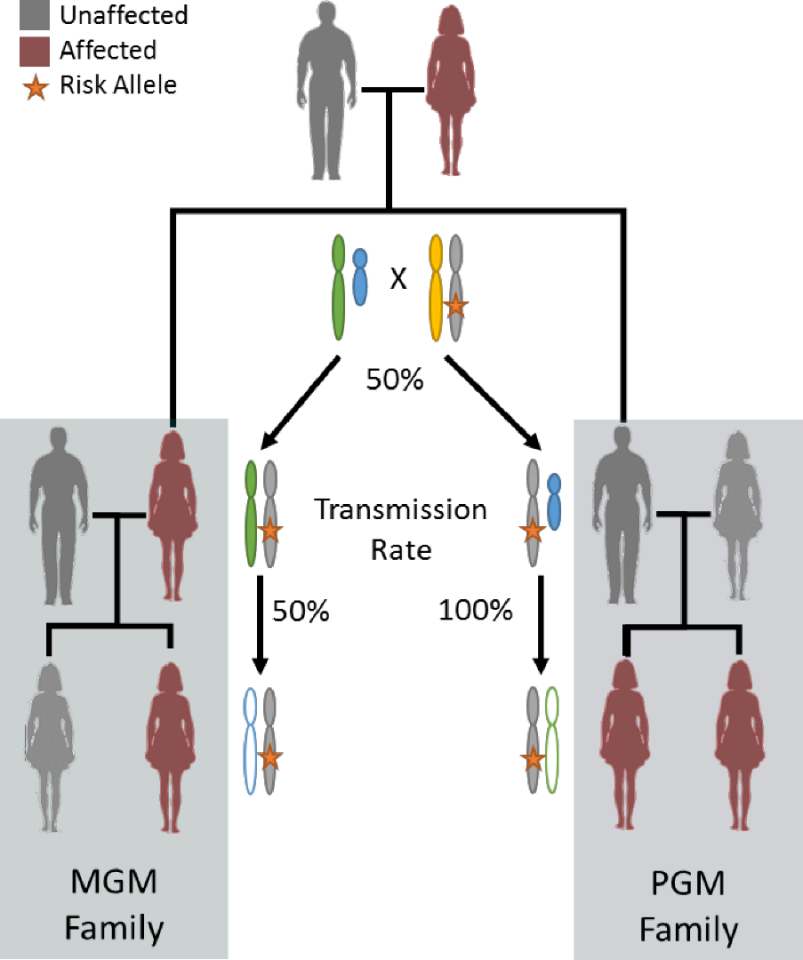Past studies have revealed that when a woman develops ovarian cancer, her sister has a higher risk of also developing the disease than her mother. This was difficult to explain, but researchers at the Roswell Park Comprehensive Cancer Center have discovered that a newly identified mutation on the X-chromosome, passed down from the father, may be linked to an earlier onset of ovarian cancer in women and higher rates of prostate cancer in men.
Collecting information from the Familial Ovarian Cancer Registry, the research team led by Kevin Eng and Kunle Odunsi sequenced portions of the X-chromosome from 186 women – pairs of granddaughters and grandmothers – affected by the cancer, and discovered that genes inherited from the paternal grandmother were linked to an earlier age-of-onset for ovarian cancer cases than those passed down by maternal heritage. These paternal genes were also associated with an increased risk of prostate cancer in fathers and sons.
Further sequencing enabled the identification of a previously unknown mutation on the X-chromosome that may be connected to cases of ovarian cancer that develop more than six years earlier than average. This could also be a key factor aligned with the risk of developing ovarian cancer, independent of other known susceptibility genes, such as BRCA1 and BRCA2.

"Our study may explain why we find families with multiple affected daughters: because a dad's chromosomes determine the sex of his children, all of his daughters have to carry the same X-chromosome genes," says Dr Eng, an assistant professor at Roswell Park's Department of Biostatistics and Bioinformatics. "What we have to do next is make sure we have the right gene by sequencing more families. This finding has sparked a lot of discussion within our group about how to find these X-linked families. It's an all-or-none kind of pattern: A family with three daughters who all have ovarian cancer is more likely to be driven by inherited X mutations than by BRCA mutations."
In future research, the scientists are looking to confirm the identity and function of this gene, as well as determine the possibility of seemingly sporadic ovarian cancer cases actually being inherited. This could lead to improved cancer screening and genetic risk assessment.
The study was published in PLOS Genetics.
Source: PLOS





